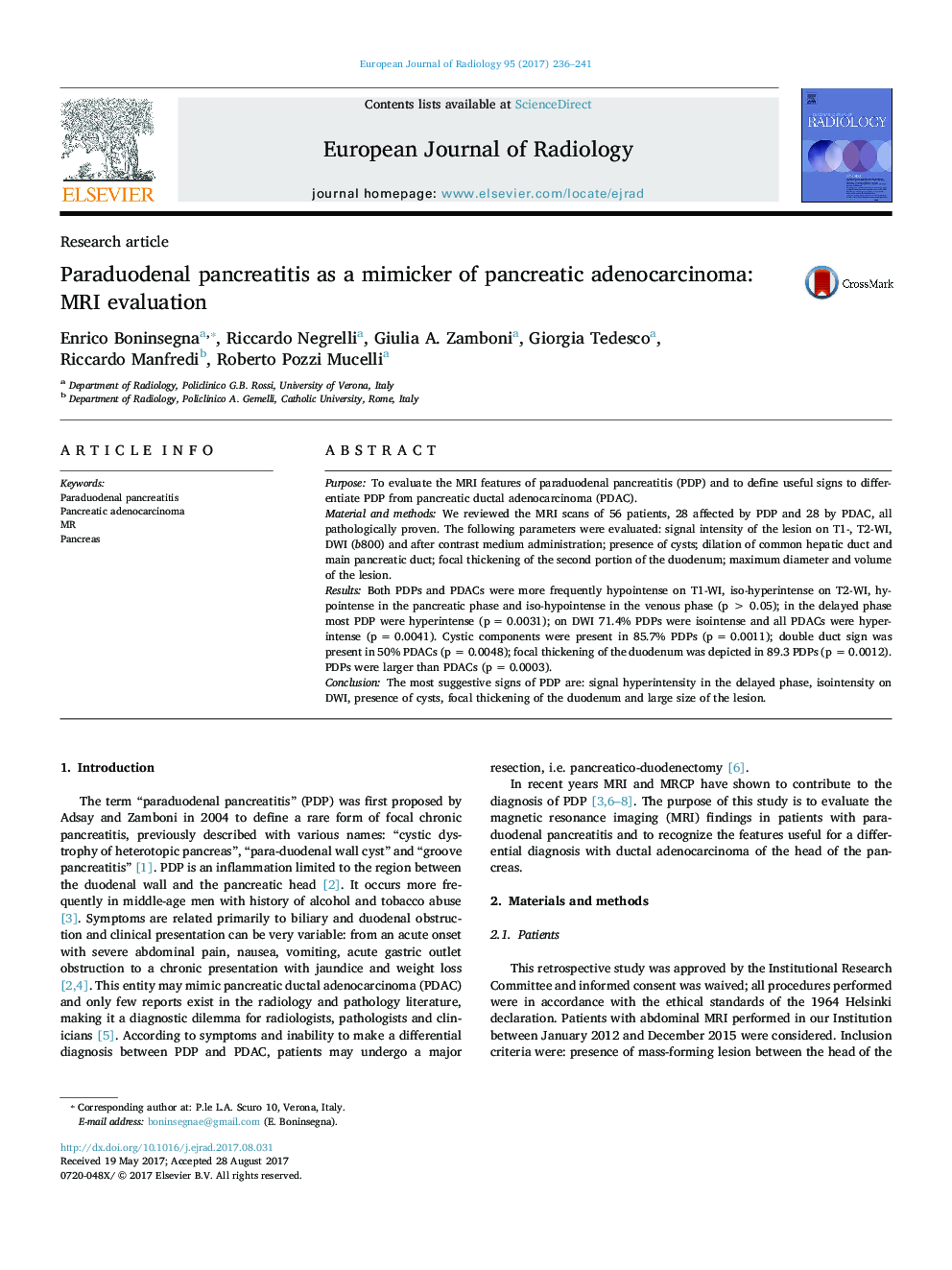| Article ID | Journal | Published Year | Pages | File Type |
|---|---|---|---|---|
| 5725998 | European Journal of Radiology | 2017 | 6 Pages |
PurposeTo evaluate the MRI features of paraduodenal pancreatitis (PDP) and to define useful signs to differentiate PDP from pancreatic ductal adenocarcinoma (PDAC).Material and methodsWe reviewed the MRI scans of 56 patients, 28 affected by PDP and 28 by PDAC, all pathologically proven. The following parameters were evaluated: signal intensity of the lesion on T1-, T2-WI, DWI (b800) and after contrast medium administration; presence of cysts; dilation of common hepatic duct and main pancreatic duct; focal thickening of the second portion of the duodenum; maximum diameter and volume of the lesion.ResultsBoth PDPs and PDACs were more frequently hypointense on T1-WI, iso-hyperintense on T2-WI, hypointense in the pancreatic phase and iso-hypointense in the venous phase (p > 0.05); in the delayed phase most PDP were hyperintense (p = 0.0031); on DWI 71.4% PDPs were isointense and all PDACs were hyperintense (p = 0.0041). Cystic components were present in 85.7% PDPs (p = 0.0011); double duct sign was present in 50% PDACs (p = 0.0048); focal thickening of the duodenum was depicted in 89.3 PDPs (p = 0.0012). PDPs were larger than PDACs (p = 0.0003).ConclusionThe most suggestive signs of PDP are: signal hyperintensity in the delayed phase, isointensity on DWI, presence of cysts, focal thickening of the duodenum and large size of the lesion.
